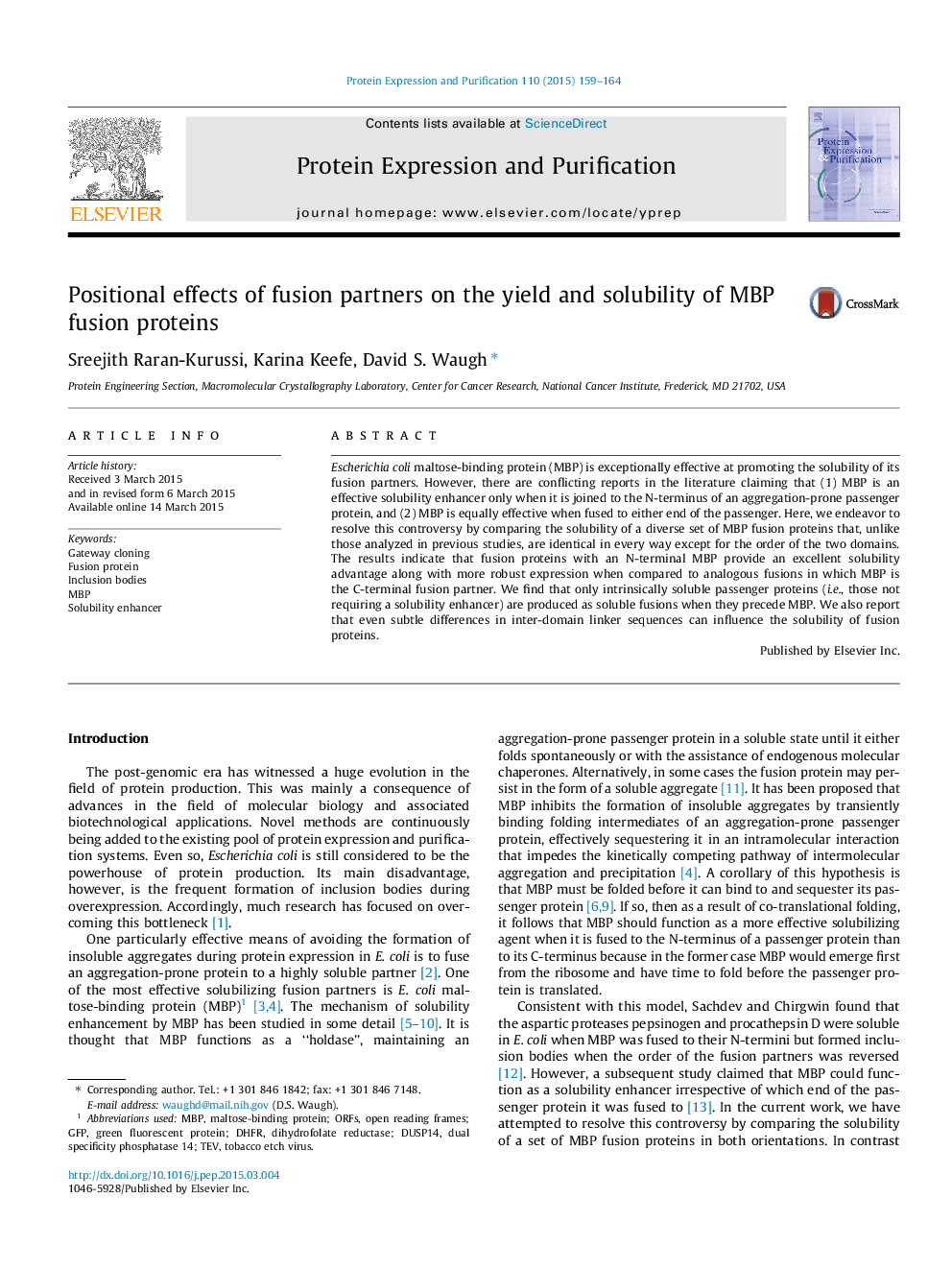| Article ID | Journal | Published Year | Pages | File Type |
|---|---|---|---|---|
| 2020354 | Protein Expression and Purification | 2015 | 6 Pages |
•Both the yield and solubility of aggregation-prone proteins can be improved by fusing them to MBP.•N-terminal positioning of MBP in fusion proteins is clearly superior to C-terminal positioning.•Even minor alterations of inter-domain linker residues can have a major impact on solubility.
Escherichia coli maltose-binding protein (MBP) is exceptionally effective at promoting the solubility of its fusion partners. However, there are conflicting reports in the literature claiming that (1) MBP is an effective solubility enhancer only when it is joined to the N-terminus of an aggregation-prone passenger protein, and (2) MBP is equally effective when fused to either end of the passenger. Here, we endeavor to resolve this controversy by comparing the solubility of a diverse set of MBP fusion proteins that, unlike those analyzed in previous studies, are identical in every way except for the order of the two domains. The results indicate that fusion proteins with an N-terminal MBP provide an excellent solubility advantage along with more robust expression when compared to analogous fusions in which MBP is the C-terminal fusion partner. We find that only intrinsically soluble passenger proteins (i.e., those not requiring a solubility enhancer) are produced as soluble fusions when they precede MBP. We also report that even subtle differences in inter-domain linker sequences can influence the solubility of fusion proteins.
Graphical abstractFigure optionsDownload full-size imageDownload as PowerPoint slide
